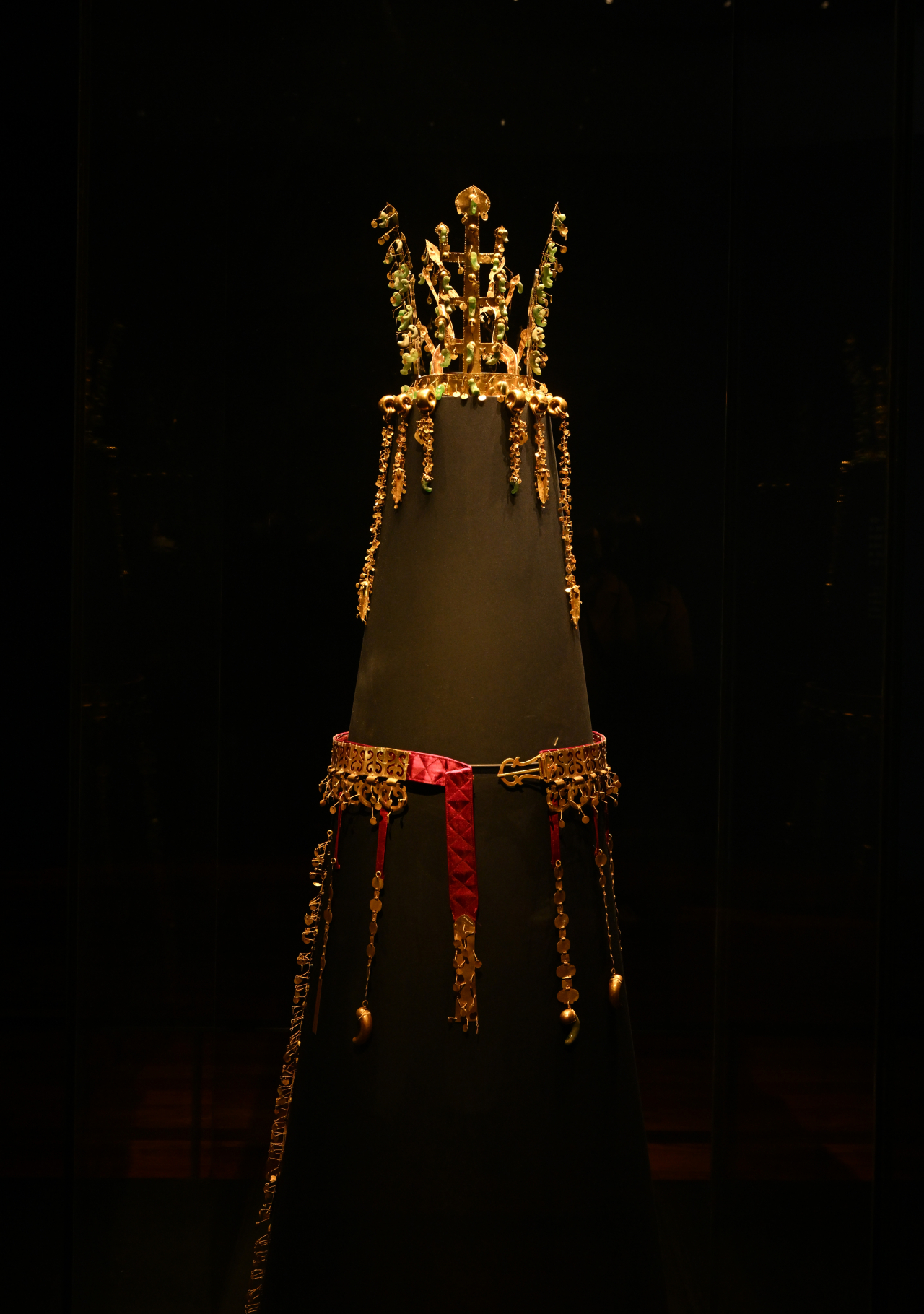[Stories of Artifacts] Gold crown and belt reveal Silla rulers' weakness
By Kim Hae-yeonPublished : April 17, 2023 - 18:18
This article is the first in a series introducing well-known cultural artifacts from different periods in Korean history. -- Ed.

Stepping into the National Museum of Korea's Silla Hall, one enters a place of serenity.
Glistening under the hall's faint lights are delicate golden and gilt-bronze objects.
A separate room displays a gold crown and belt from the Hwangnam Daechong Tomb in Gyeongju (present-day North Gyeongsang Province), the capital of Silla, designated National Treasures in 1978.
"President Yoon and President Biden looked at the pieces in awe. President Biden seemed intrigued to hear the latest studies on how they were worn at the time," said Lee Dong-gwan, a museum researcher who focuses on the Three Kingdom's Period, recalling the two presidents' visit to the state museum in May last year.
The crown and belt were discovered inside the largest tomb in Gyeongju.
Known as the "Country of Gold," the Silla Kingdom (57 BC – 935 AD) originated in the Gyeongju region and consisted of 12 chiefdoms in the southeastern part of the Korean Peninsula.
A vast trove of gold crafts and ancient pottery, as well as objects from abroad which indicate the existence of international trade at the time, were discovered inside the Hwangnam Daechong Tomb.
The people of Silla believed that the afterlife was an extension of the present, which helps us understand why Silla gold crowns and precious ornaments were found inside the royal tombs.
Hwangnam Daechong Tomb, a tomb with two mounds, was excavated from 1973 to 1975 by the Office of Cultural Properties, today's National Institute of Cultural Heritage.
While scholars have proven that it is a royal tomb, its occupants' identities have not been clearly established, hence the name, Hwangnam Daechong Tomb, which means "a large tomb in Hwangnam."
Studies suggest that the king’s burial mound was built first, followed by the queen’s.
The silver belt ornament excavated in the north mound has "belt of the queen" clearly inscribed on it in Chinese characters. Studies suggest that the queen was laid to rest wearing a robe, the gold crown and the belt, as well as gold bracelets, rings and necklaces.
Six gold crowns from the Silla Kingdom have been discovered so far -- three are housed at the National Museum of Korea, and three are kept by the Gwangju National Museum.
The development of Silla crowns can be divided into three stages, based on the style of the vertical ornaments attached to the band.
Hwangnam Daechong Tomb's gold crown is an example of a Silla crown with branch-shaped vertical ornaments.
The narrow headband has three straight vertical ornaments and two shorter angled ones in the back. Six strands of pendants are also attached to the band, each suspended by thick rings.
Considered the most refined type of Silla crown, this style features a combination of symmetrical and alternating branch-shaped ornaments. This style differs from the earlier types that have three straight symmetrical branch-shaped parts, of which the gold crown from Gyo-dong is an example.
"If you look closely, elaborate patterns and exquisite spangles are noticeable not just on the crown, but on the belt as well," Lee said.

The belts were also a symbol of royal authority. A leather band covered with gold square plates, the belt was adorned with heart-shaped spangles and gold pendants that resemble various objects.
The plates were sometimes decorated with trefoil designs, dragons and phoenix, which are based on Goguryeo Kingdom (37 BC – 668 AD) motifs. Pendants in the shapes of fish, curved jade, knives and pliers are also found on Goguryeo artifacts.
"Viewers might think that Silla was a prosperous and wealthy kingdom judging by its use of gold and the brilliance of the object, but the truth is closer to the opposite," Lee said.
Although the Silla period is generally understood to have been an era of great prosperity, the period can be characterized as one of constant conflict between the royalty and the aristocrats.
The splendid artifacts, paradoxically, reflect the rulers' desire to demonstrate their might at a time when their power was eroding.



![[Herald Interview] 'Amid aging population, Korea to invite more young professionals from overseas'](http://res.heraldm.com/phpwas/restmb_idxmake.php?idx=644&simg=/content/image/2024/04/24/20240424050844_0.jpg&u=20240424200058)













![[KH Explains] Korean shipbuilding stocks rally: Real growth or bubble?](http://res.heraldm.com/phpwas/restmb_idxmake.php?idx=652&simg=/content/image/2024/04/25/20240425050656_0.jpg&u=)

